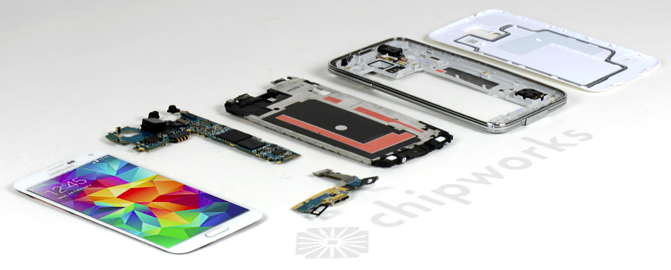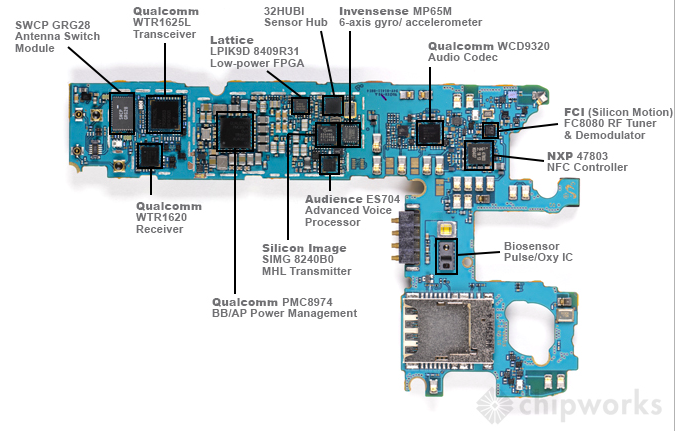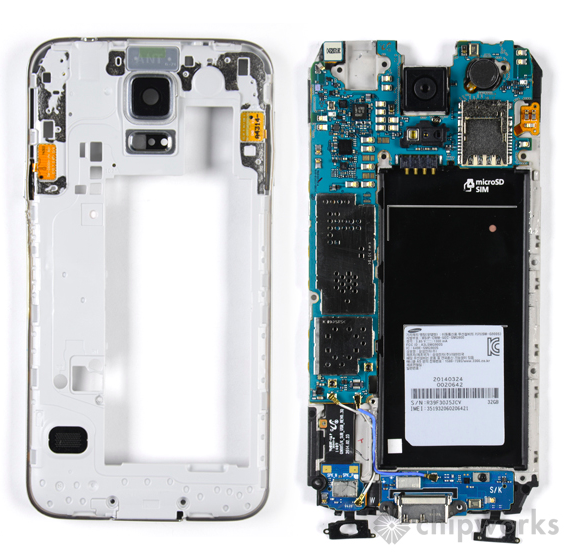
You would be forgiven for mistaking the Galaxy S5 for a minor upgrade over last year’s S4. It’s only slightly bigger, nominally faster (on paper, at least) and similarly styled.
But underneath, Samsung has revitalized the device’s internals, drastically improving the quality of the display, the antenna and baseband architecture, and the camera, while offering new integrated components like a fingerprint sensor and heart rate scanner.
Chipworks, an Ottawa-based company, takes a “rip-it-apart” approach to new phones, unlike iFixit, which does it more holistically (but equally damaging). Chipworks quickly took apart the Korean variant of the Galaxy S5 and found it to sport some interesting chips, including the latest Snapdragon 801 MSM8974AC processor — the fastest currently available from Qualcomm — and a brand new Samsung-designed 16MP camera sensor.
It’s that 16MP camera sensor that continues to be the star of the show, as all previous Samsung Galaxy S flagships to date have sported sensors from other companies. In recent years, the Samsung Galaxy S3 and S4/Note 3 sported Sony IMX stacked chips, similar to those found in the high-end Xperia line (though Sony has since saved its best sensors for its own chips). Now, as we reported last year, Samsung’s own ISOCELL technology has found its way into a shipping product, and it “reportedly enables a 30% reduction in crosstalk and 30% increase in full well capacity,” according to Chipworks’ report.

This is the “next key image sensor technology after back-illuminated (BSI) sensor technology,” says Samsung, and should provide better quality, faster autofocus and an overall improved camera experience than traditional backside-illuminated sensors.
Chipworks also found the fingerprint sensor to be sourced from Synaptics, the same company behind many Windows and Mac trackpads. According to the report, Samsung is using a technology from Synaptics called “Natural ID” technology, which combines a portion of the touchscreen, which has a higher-resolution digitizer than the rest of the display, with a fingerprint sensor itself for security validation, to ensure accuracy. This process is very different to Apple’s Touch ID, as it requires a vertical swipe down from the touchscreen onto the home button, and one cannot be activated without the other.

In all, Samsung’s done quite a nice job repackaging and improving on the Galaxy S4 while incorporating “the best performing smartphone display ever” along with a few core hardware improvements.
[source]Chipworks[/source]
MobileSyrup may earn a commission from purchases made via our links, which helps fund the journalism we provide free on our website. These links do not influence our editorial content. Support us here.


